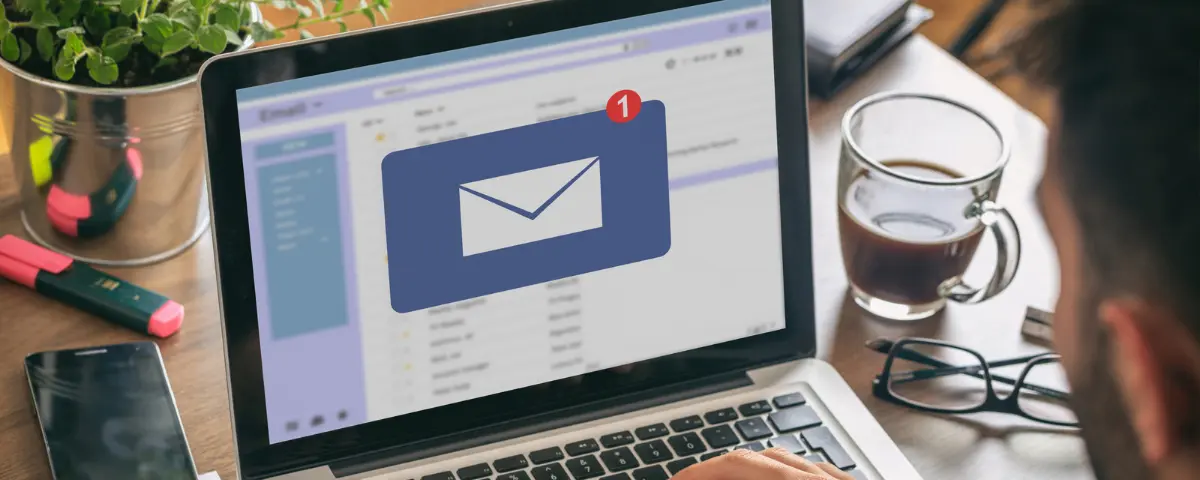Cold email marketing is one of the best ways to get potential clients if used appropriately. It has proven difficult for many business owners who don’t know how to do it. I always tell people it’s as simple as ABC. This article covers what cold email marketing is and how you can land clients with it. Follow us to learn tips for sending out cold emails.
What is a Cold email?
Imagine someone walks up to you for the first time, and the person starts to talk about how nice their product or service is and why you should get it. You’d think the person was crazy, right? Well, that’s what some business owners do, and that is certainly not what cold emails are about.
A cold email is a message to a person you have no prior contact with. The reason for this is to establish a relationship with the person in order to pitch a product or service to them. This can be difficult because people are always wary of people they don’t know, and even more so when they can’t see the person enough to gauge their expressions and their motives.
What is Cold Email Marketing?
Cold email marketing is a marketing strategy that uses cold emails as the first point of contact with a prospective customer. It is wired to reach a larger audience and convert them.
The primary goal of cold email marketing is to start a conversation and ultimately exchange value, such as introducing a product, service, or proposal. This approach is cost-effective and allows for precise targeting, making it a popular method for sales outreach and business development.
Why Is Cold Email Important?
Cold emailing is important for so many reasons. It is a useful technique for lead creation, company outreach, product or service introduction, networking, job search, recruitment, market research, sales, and income production. Cold emails are trackable and measurable, and this increases their effectiveness.
Get 50% Discount to Master ALL Aspects of Digital Marketing That Can Earn You $2,500 - $5,000 a month (Even if you are a complete beginner!)
Our students that intentionally implement what they learn from our digital marketing course make back the entire course fee within a single month or more after completing our course because our course gives them many income generating options with unlimited earning potential with no age or location barrier. The best part is no technical skills are required.
An opportunity to change your lifestyle and make money working from anywhere in the world. The results our students get from our digital marketing course prove this could be applied to any market or country and that it is designed for any skill level and work background.
*By signing up, you agree to our privacy policy and terms of service.
It is also one of the most affordable ways to connect with a lot of potential clients and begin fostering a relationship with them. They can also assist companies in positioning themselves as experts in their fields and innovative thinkers in their industry.
When is Cold Email Marketing Used?
It is important to remember that the primary function of cold email marketing is to convert and make sales. Here, we will be discussing when cold emails are used and when cold email marketing is used
Cold emails are used in the following situations:
Job seekers
Cold emailing is a proactive approach to growing your network and finding out about possible positions from professionals in your field if you’re looking for jobs.
You can also use cold emailing to get tips and insights from experts in your industry by asking them to participate in informational interviews.
Business Development and Sales
Cold emails are frequently used in sales to get in touch with prospective customers who haven’t shown interest in a product or service. It entails writing enticing letters that emphasize the benefits they can receive from your goods or services.
Cold emailing is also used for reaching out to possible collaborators or commercial partners in order to explore agreement terms that could benefit both parties.
Startups and Entrepreneurs
Entrepreneurs of new or existing businesses send out cold emails to introduce their firm to possible investors when they are looking for funding. Cold email is also a good strategy for customer acquisition. Business owners send out emails to clients who they feel might be interested in their product or service.
Public relations and marketing
The public relations and marketing team also sends cold emails to bloggers, journalists, and influencers to pitch a topic or product for possible coverage. It is also used when sending out invitations to suitable people to take part in a product launch, webinar, or event.
Research or academic inquiries
Researchers and academics may utilize cold emails to ask for feedback on their work or to suggest collaborations. Cold emails also come in handy when making inquiries of professionals in a certain field in order to get data, counsel, or cooperation.
Recruitment
Cold emails are also used by recruiters. Prospective applicants who meet specific requirements for job openings may receive cold emails from recruiters.
Headhunting, which is the process of locating and contacting experts who might be a good fit for particular, prominent jobs, makes use of cold emailing.
These are some of the instances where cold emails can be used.
Next, we will look at some instances where cold email marketing can be used. Some of them include:
Lead Generation
Companies frequently use cold email marketing to contact prospective clients or customers who fall into their intended target audience in an effort to create leads.
Cold email marketing is also used in list building. List building is the process of compiling contacts into a database for upcoming marketing and sales initiatives.
Sales Outreach
Businesses utilize cold email marketing to present their goods and services to prospective clients who could have shown interest in them depending on certain factors. Businesses that also send out special offers, discounts, or promotions to encourage recipients to buy something use cold email marketing.
Event Promotion
Cold email marketing promotes attendance and involvement in trade exhibitions, industry conferences, and networking gatherings. It is used when sending out invitations to webinars, workshops, or other events pertaining to the industry or specialty of the sender.
Content Distribution
Cold email marketing encourages recipients to sign up for newsletters or updates so that content is distributed on a regular basis. It is also used when distributing informative materials such as eBooks, whitepapers, or blog posts. to position the sender as an authority in the industry.
B2B Partnerships
Cold email marketing enhances collaborations by reaching out to other companies with the hopes of forming alliances, joint ventures, or collaborations. It also assists with presenting business-to-business solutions and looking into new supplier partnerships.
Market Analysis
Cold email marketing promotes reaching out to a specific audience by cold email to get their thoughts, conduct surveys, or collect feedback. It allows for customer insights—learning about the needs, difficulties, and preferences of customers.
Reactivation Campaigns
Businesses can re-engage with silent customers via cold email marketing by cold emailing clients who haven’t heard from the company in a long time and also promoting subscription renewals for goods or services to clients whose subscriptions have lapsed.
Is cold email spam?
Cold emails are not spam. However, if you approach cold email incorrectly, certain receivers may consider it spam.
Although they are both addressed to people you don’t already know, spam and cold emails are two entirely different things. A cold email is sent to a person you haven’t spoken to before.
A salesperson will typically send cold emails to qualified prospects that meet their ideal client profile. This simply means that thorough research is conducted to determine if the person fits into their target audience.
Spam, however, is an unwanted email sent to recipients who usually don’t want to receive it. Examples of spam emails include sales pitches for dubious products, unsolicited newsletters, chain emails, and phishing scams.
Spam sales emails typically go to unqualified leads that don’t necessarily meet the desired target audience, and their aim is usually to trick recipients, so the email senders frequently pretend to be someone else.
6 Easy Steps for Cold Email Marketing
 #1 Cold email marketing tip – Craft Powerful Headlines
#1 Cold email marketing tip – Craft Powerful Headlines
Your headlines are the first thing your prospective customers will see. Let it be so loud that it stops them in their tracks and makes them stop scrolling. The average human has a very short attention span.
A lot of things, especially with the advancement of technology and attention, are vying for their attention. So let your headlines be catchy and attention grabbing.
#2 Cold email marketing tip – Personalize your emails
Everybody likes to be called by their name. There is this special feeling it gives, and it is such an attention-grabber. Imagine you entered a room and said, “Hey.” It’s very unlikely that anybody would turn.
Okay, maybe a few heads will turn, but you will have their attention for a fraction of a second. But once you call a particular name like “Stephen,” you will have Stephen’s full attention.
You have to remember that your prospective customer has a lot of emails to go through, and seeing one with their name on it makes them feel like its not just a broadcast message that was sent to a thousand other people.
It also shows that you have taken time to research this person.
Also, ensure to mention something about the client that you admire. This shows that you are also genuinely interested in working with them.
#3 Cold email marketing tip – Keep emails brief, to the point and error-free
Nobody likes to read something that is too long. Keep your emails brief and too the point. It shouldn’t exceed 5 paragraphs.
Keep paragraphs short, too. Start by giving a brief introduction of yourself and your reason for reaching out. A few sentences outlining what you have to offer and how it might help the receiver should come next.
Put a call to action at the conclusion of your email, such as requesting that a call or meeting be scheduled to continue the conversation.
Also, ensure to do a spell and grammar check before you hit send. Apps like Grammarly can be used for this. Spelling and grammar errors may make you appear unprofessional and may reduce your chances of getting a response.
#4 Cold email marketing tip – Focus on their pain points
This is one of the best ways to connect with a prospective client and show that you understand them. Finding out their pain points would require researching them.
Finding out the pain points and talking about them would also mean you get to bring a solution, which is your product or service.
So rather than focusing on selling, focus on solving their problem and making them feel valued and understood.
Trust me, people are likely to remember who helped them solve a problem faster than people who tried to shove a product down their throats in a bid to make sales.
#5 Cold email marketing tip – Call to action
Adding a call to action directs the prospective client to the steps to take next or how they are supposed to contact you. Always ensure your call to action is clear and not confusing; otherwise, the prospective client might not take action.
Ensure you have one call to action that is stationed at the bottom of the page. CTA’s should also be conspicuous enough for the prospective client to see.
#6 Cold email marketing tip – Follow up
Its possible that the prospective client may not see your email due to the influx of emails they receive every day. When this happens, it is okay to send another email as a reminder.
Politely refer back to the other email, be respectful, and don’t come off as aggressive or pushy, or you might lose that client. This reminder can increase your chances of getting a response.
How to Write a Cold Email
Writing a cold email doesn’t have to feel difficult. In fact, it’s an art that can help you connect with new opportunities and people.
Here’s a simple guide to crafting a compelling cold email:
Start with a Friendly Greeting:
Begin your email with a warm greeting. Use the recipient’s name if possible to make it more personal.
Example: “Hi [Recipient’s Name],”
Introduce Yourself:
Briefly introduce yourself and your role. Keep it concise and to the point.
Example: “I’m [Your Name], and I work at [Your Company].”
Get to the Point:
Clearly state the purpose of your email. Let the recipient know why you’re reaching out.
Example: “I wanted to connect with you to discuss [specific topic or opportunity].”
Highlight the Value:
Explain how your product, service, or proposal can benefit the recipient. Focus on what’s in it for them.
Example: “Our [product/service] can help [solve a specific problem or fulfill a need] for your [company/role].”
Keep it Short and Sweet:
People are busy, so keep your email concise. Aim for a few short paragraphs that convey your message effectively.
Add a Call-to-Action (CTA):
Clearly state what you want the recipient to do next. Whether it’s scheduling a call, responding to the email, or checking out a link, make it easy for them to take the next step.
Example: “Could we schedule a brief call to discuss this further? I’m available [provide a few time options].”
Personalize the Closing:
End your email with a personalized closing. You can express your appreciation, mention something specific about the recipient, or simply thank them for their time.
Example: “Thank you for considering [your product/service]. Looking forward to hearing from you soon!”
Signature:
Include a professional email signature with your contact information. It adds a touch of credibility to your message.
Follow Up:
If you don’t get a response, it’s okay! Send a polite follow-up email to express your continued interest and provide any additional information if needed.
Test and Iterate:
Experiment with different approaches and see what works best for you. Analyze the responses and continuously refine your cold email strategy.
Remember, the key to a successful cold email is to be genuine, respectful of the recipient’s time, and focused on providing value.
Conclusion on cold email marketing
To sum up, cold email marketing is an effective technique that companies may use to start a conversation with a specific audience.
Although it entails contacting people or organizations with whom they have never previously interacted, the secret to its success is being able to create messages that are clearly valuable, individualized, and captivating.
Businesses can maximize their cold email marketing tactics for better results and meaningful interaction by following these guidelines.
FAQS
What not to say in a cold email?
It’s important to steer clear of imposing language, long introductions, excessive slang, generic greetings, and unnecessary details when sending a cold email. Avoid typographical and grammatical mistakes, quick sales pitches, and generic dialogue.
Furthermore, exercise caution when using exclamation marks, attachments without context, or too formal language. Avoiding these mistakes can help you come across as professional, establish a rapport, and raise your chances of getting a yes.
How many cold emails does it take to reach a client?
The industry, target audience, email content, and follow-up plan are some of the factors that affect how many cold emails are required to reach a client.
The Rule of Seven in marketing highlights constant exposure for effective conversion, even though statistics indicate it may take five to twelve touchpoints to convert a lead.
Cold email marketing is more successful when it includes targeted approaches, relationship building, strategic follow-ups and high-quality content. It takes perseverance and flexibility to maximize cold emailing in the long run.
More Resources
20 Key Mistakes to Avoid in Your Cold Emails – Newoldstamp
How To Start Email Marketing | Free Email Marketing Guide For Beginners
Email Marketing Strategies – 13 Crazy Email Marketing Tips For High ROI [With Examples]
Improve Your Email Marketing Results With These 6 Steps
13 Best Email Marketing Tools (Software) to Boost Conversion and Sales





